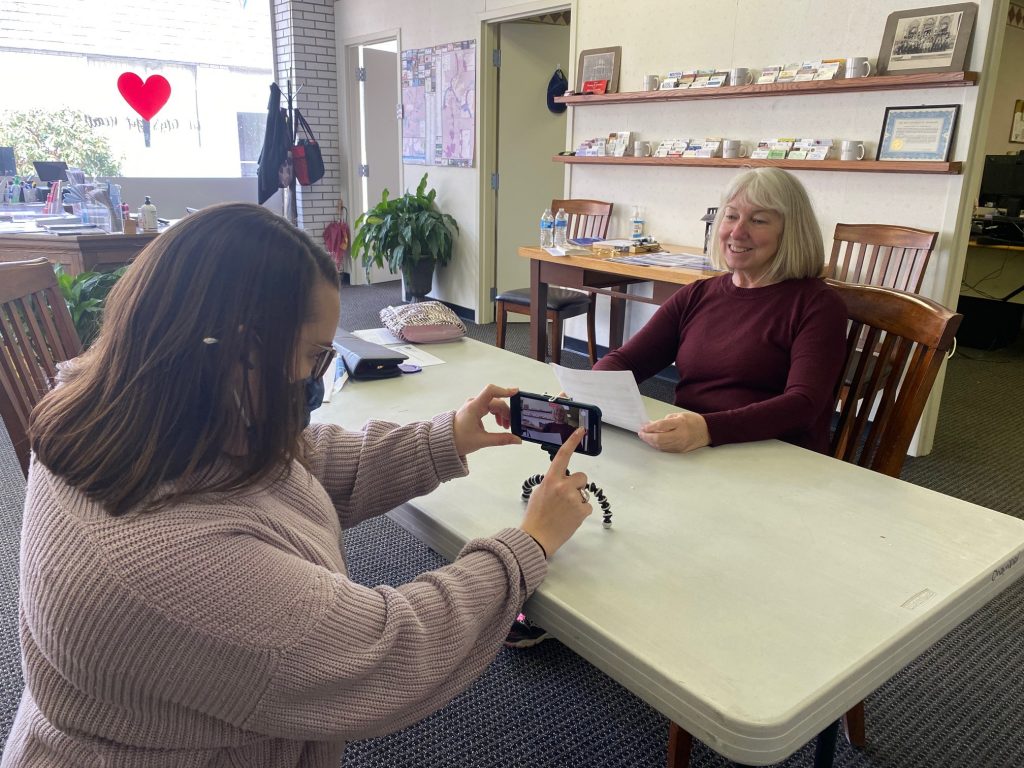
Every business has the resources to produce great video content. Yes, you can hire multi-person film crews (or me!) to come do the job, or you could take your smartphone out of your pocket and start creating.
There have been award winning feature films shot on phones and while I can’t promise you an Oscar, I can promise you that you have everything you need to start connecting with your audience through video content.
Here are some tips to help you get started:
Story
The most important part of any video is the story it tells. Before worrying about equipment or technical details, decide what you want your audience to know and how you’re going to communicate that. What is the best way to tell that story on video? Is it a product demonstration? A customer testimonial? An interview with the owner? The possibilities are endless.
But don’t stress too much about getting the story exactly right, because just like with the technical aspects you’ll keep learning and growing as you create. But to get started, pick one story and identify the best way to tell it in a video.
Stability
Then identify what you want the audience to look at to communicate your story. Is it a person speaking? A product on a shelf? Remove anything that may distract the audience from focusing on your subject. Any unrelated movement will draw the eyes off of your focus. That includes camera movement. Consider using a tripod to hold the camera steady or, if not available, lean your phone against a solid object such as a stack of books.
Composition
Think about where this video will be posted. Is it going to be on your website and YouTube? Or is going to be posted in an Instagram Story? The video’s destination determines its orientation. Landscape orientation means the video is wider than it is tall while portrait orientation means the video is taller than it is wide. Television, movies, and most videos on YouTube and websites have a landscape orientation created by holding your phone horizontally. Instagram Stories have a portrait orientation created by holding the phone vertically. Most businesses will likely want to make videos in landscape so make sure you position your phone horizontally.
From there, follow the Rule of Thirds. Imagine your phone screen is split into thirds both horizontally and vertically. In fact you don’t even have to imagine it; go to your camera settings and turn on the function called “Grid.” This will add lines to divide your screen into thirds in your camera app (don’t worry, they won’t be displayed in the final video). Studies have shown that our brains find images more interesting when subjects are placed at the intersections of these grid lines instead of in the center of the frame. So if you’re filming an interview, don’t put the speaker in the center, position them a little to one side so they are right where the gridlines intersect.
Focus
With your camera in a stable location and your shot properly composed, tap the image of your subject on the screen. If you are filming a person, look at your shot on your phone and tap their face. You should see a box or circle appear where you touched. This lets the camera know to focus on this part of the scene.
Lighting
Whether your subject is a person or a product, make sure the front of it is properly lit. Avoid positioning subjects with a window or door behind them; this will create a silhouette effect and your audience will just see a dark shape instead of clearly seeing your subject. Instead, consider positioning them near a window where the incoming light shines on their face.
You can fine-tune the brightness of the shot in the camera app on your phone. Follow the steps above to set the focus and when the box appears around your subject, look above the box for a small icon of the sun. Touch the sun and drag it one way to make the image brighter and the other way to make the image darker.
Sound
When it comes to video, the first thing most of us think of are images, but nothing ruins a video quicker than poor sound. Bad audio is distracting and often makes us stop watching content we were originally interested in. So pay attention to the noises in the area where you are about to film. Film at a time when there are less noises from traffic, people, and wind. For an even better audio experience you can purchase a microphone that connects to your phone. But when you’re just starting out simply paying attention to your surroundings and filming in areas free of distracting noises will suffice.
Editing
Video editing can refer to combining multiple shots, sounds, and effects into one clip but it can also refer to just trimming a clip. Right on your phone you can trim a video that you shot. Go into your gallery, find the clip you just filmed and hit “Edit.” Here you can trim a clip, adjust the color, or crop the image. So edit out the awkward pause at the beginning and the sigh of relief at the end and keep just the best content.
If you want to take it a step further, some social media sites have editing capabilities built in. YouTube Studio allows you to combine multiple clips and Facebook has a feature that lets you upload a thumbnail or a title slide.
Get Started
Once video becomes a regular part of your storytelling consider purchasing a few accessories such as microphones and a stabilizer or gimbal to increase the production quality of your creations.
But the most important video tip is to get started! Published is better than perfect. Don’t let perfection be the enemy of good. Put these tips to work and start filming. Watch back what you made, adjust, and make another video.
Just get started and then keep going!
